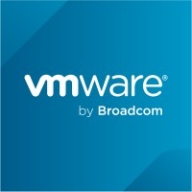


vCenter Configuration Manager and Red Hat Satellite compete in enterprise system management. vCenter Configuration Manager seems to have the upper hand in compliance management and real-time monitoring for VMware environments, while Red Hat Satellite is stronger in managing Red Hat environments through lifecycle management and Ansible integration.
Features: vCenter Configuration Manager provides detailed compliance management, real-time monitoring, and simplified VMware environment management. Red Hat Satellite offers lifecycle management, integration with Ansible automation, and tools for large-scale Red Hat environment management.
Room for Improvement: vCenter Configuration Manager could improve scalability, reporting accuracy, and performance under large loads. Red Hat Satellite could enhance UI options, increase performance speed, and improve usability in complex environments.
Ease of Deployment and Customer Service: vCenter Configuration Manager has straightforward deployment in VMware environments but requires specialized knowledge, with highly rated customer support. Red Hat Satellite's deployment can be complex in mixed environments, but it benefits from extensive documentation and responsive support.
Pricing and ROI: vCenter Configuration Manager users report higher initial setup costs but find long-term ROI justifiable through comprehensive management features. Red Hat Satellite is more cost-effective initially with a strong ROI in Red Hat-centric deployments. Pricing perceptions vary, with vCenter seen as an investment for VMware-heavy setups and Satellite for cost-effective Red Hat management.
| Product | Market Share (%) |
|---|---|
| Microsoft Intune | 9.2% |
| Red Hat Satellite | 8.6% |
| vCenter Configuration Manager | 0.9% |
| Other | 81.30000000000001% |



| Company Size | Count |
|---|---|
| Small Business | 116 |
| Midsize Enterprise | 46 |
| Large Enterprise | 152 |
| Company Size | Count |
|---|---|
| Small Business | 6 |
| Midsize Enterprise | 5 |
| Large Enterprise | 14 |
| Company Size | Count |
|---|---|
| Small Business | 26 |
| Midsize Enterprise | 11 |
| Large Enterprise | 19 |
Microsoft Intune provides centralized management of mobile devices and applications, ensuring security, compliance, and productivity through integration with Microsoft services like Microsoft 365 and Azure Active Directory.
Organizations use Intune for managing mobile devices and applications, enhancing security and compliance across platforms. With features like single sign-on, conditional access, and zero-touch deployment via Autopilot, it facilitates efficient operations. Intune's scalability, easy enrollment, and capabilities such as remote wipe support diverse device management, offering robust data protection and efficient operation. Despite its features, improvement areas include reporting, compatibility with non-Microsoft devices, and better support for macOS and Linux devices.
What are the key features of Microsoft Intune?
What benefits should users look for in reviews?
In industries such as finance, healthcare, and education, Microsoft Intune is implemented to ensure secure and compliant device management. Companies leverage its capabilities to deploy security policies and manage both corporate-owned and BYOD environments, facilitating a unified approach to data protection and compliance.
Red Hat Satellite is a powerful system management tool that is designed to enable users to maximize the effectiveness of any Red Hat infrastructure solutions that they wish to deploy. It can automate most of the management tasks that administrators would otherwise have to manually perform. This enables businesses to avoid the possibility that human error is going to in some way reduce the efficiency of their operations. Additionally, it increases an organization’s ability to address all of its strategic business needs effectively. It can be used across a wide variety of environments that include physical, virtual, and cloud environments.
Red Hat Satellite Benefits
Some of the ways that organizations can benefit by choosing to deploy Red Hat Satellite include:
Red Hat Satellite Features
Reviews from Real Users
Red Hat Satellite is a highly effective solution that stands out when compared to many of its competitors. Two major advantages it offers are its integration suite and its advanced patch management capabilities.
Jayasunder S., the principal architect at Wipro Limited, writes, “It's really integrated with agencies that have core systems and other core management platform products or IBM products. You don't need to depend on any third party. It's a complete solution for patch and configuration management when integrated with the existing system.”
Erik W., the senior Enterprise Engineer at a transportation company, says, “The patch management and insights connector are great. Patch management has enabled us to patch every month, keeping abreast of critical and important patches, view where things are lacking, and generate plans to mitigate issues. Due to the work being done in a tool, reporting allows us to see what has been done to what servers.”
vCenter Configuration Manager is a powerful configuration management tool that is designed to enable organizations to ensure that any environment that they use to conduct business is configured in the most effective possible way. It can automate configurations consistently across virtual, physical, and cloud environments. Additionally, it enables users to place critical functions into the hands of the solution thereby avoiding the possibility that human error will reduce a business’s operations. It also hardens operations against bad actors who look for holes in a user’s security compliance policies that they can exploit.
vCenter Configuration Manager Benefits
Some of the ways that organizations can benefit by choosing to deploy vCenter Configuration Manager include:
vCenter Configuration Manager Features
Reviews from Real Users
vCenter Configuration Manager is a highly effective solution that stands out when compared to many of its competitors. Two major advantages it offers are its intuitive and simple design and its ability to scale according to the needs of its user.
Moses S., a project manager at Swakop Uranium, writes, “The platform is straightforward and user-friendly. A large knowledge base is not required to begin using it.”
Raju P., an Information Technology manager at Sikraft, says, “We can scale the solution as needed.”
We monitor all Configuration Management reviews to prevent fraudulent reviews and keep review quality high. We do not post reviews by company employees or direct competitors. We validate each review for authenticity via cross-reference with LinkedIn, and personal follow-up with the reviewer when necessary.